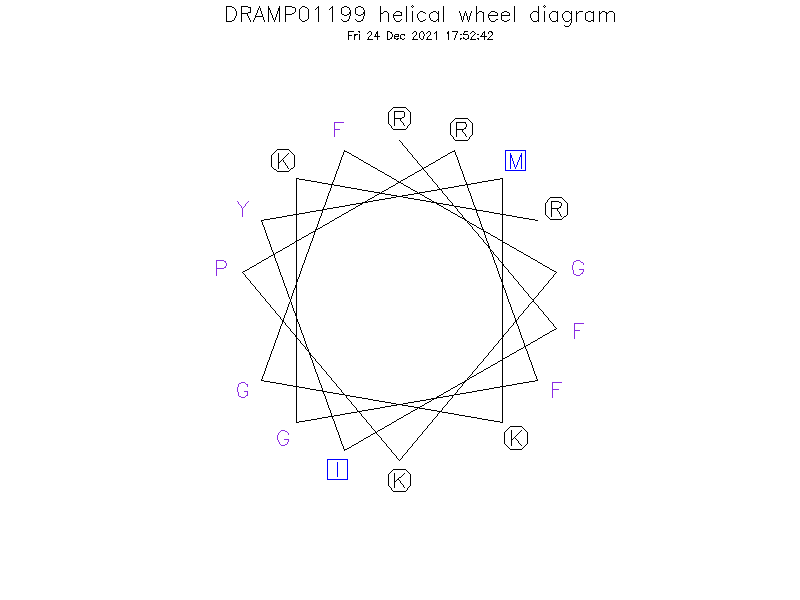General Information
-
DRAMP ID
- DRAMP01199
-
Peptide Name
- Hejiangin-A1 (Frogs, amphibians, animals)
-
Source
- Odorrana hejiangensis
-
Family
- Not found
-
Gene
- Not found
-
Sequence
- RFIYMKGFGKPRFGKR
-
Sequence Length
- 16
-
UniProt Entry
- No entry found
-
Protein Existence
- Not found
Activity Information
-
Biological Activity
- Antimicrobial, Antibacterial, Anti-Gram+, Anti-Gram-, Antifungal
-
Target Organism
-
- Gram-negative bacteria: Escherichia coli ATCC 25922 (MIC=100 µg/ml), Bacillus pyocyaneus CMCCB 10104 (MIC=25 µg/ml);
- Gram-positive bacterium: Staphylococcus aureus ATCC 25923 (MIC=25 µg/ml).
- Yeast: Candida albicans ATCC 2002 (MIC=50 µg/ml).
-
Hemolytic Activity
-
- No hemolysis information or data found in the reference(s) presented in this entry
-
Cytotoxicity
- No cytotoxicity information found in the reference(s) presented
-
Binding Target
- Not found
Structure Information
-
Linear/Cyclic
- Linear
-
N-terminal Modification
- Free
-
C-terminal Modification
- Free
-
Nonterminal Modifications and Unusual Amino Acids
- Free
-
Stereochemistry
- L
-
Structure
- Not found
-
Structure Description
- Not found
-
Helical Wheel Diagram
-
PDB ID
- None
-
Predicted Structure
- There is no predicted structure for DRAMP01199.
Physicochemical Information
-
Formula
- C94H146N28O18S
Absent Amino Acids
- ACDEHLNQSTVW
Common Amino Acids
- FGKR
Mass
- 1988.43
PI
- 11.74
Basic Residues
- 6
Acidic Residues
- 0
Hydrophobic Residues
- 4
Net Charge
- +6
-
Boman Index
- -42.52
Hydrophobicity
- -0.906
Aliphatic Index
- 24.38
Half Life
-
- Mammalian:1 hour
- Yeast:2 min
- E.coli:2 min
Extinction Coefficient Cystines
- 1490
Absorbance 280nm
- 99.33
Polar Residues
- 4
DRAMP01199
Comments Information
Function
- Hejiangin-A1 showes killing effects against the tested strains.
Literature Information
- ·Literature 1
-
Title
- Extremely abundant antimicrobial peptides existed in the skins of nine kinds of Chinese odorous frogs.
-
Pubmed ID
- 22029824
-
Reference
- J Proteome Res. 2012 Jan 1;11(1):306-319.
-
Author
- Yang X, Lee WH, Zhang Y.

